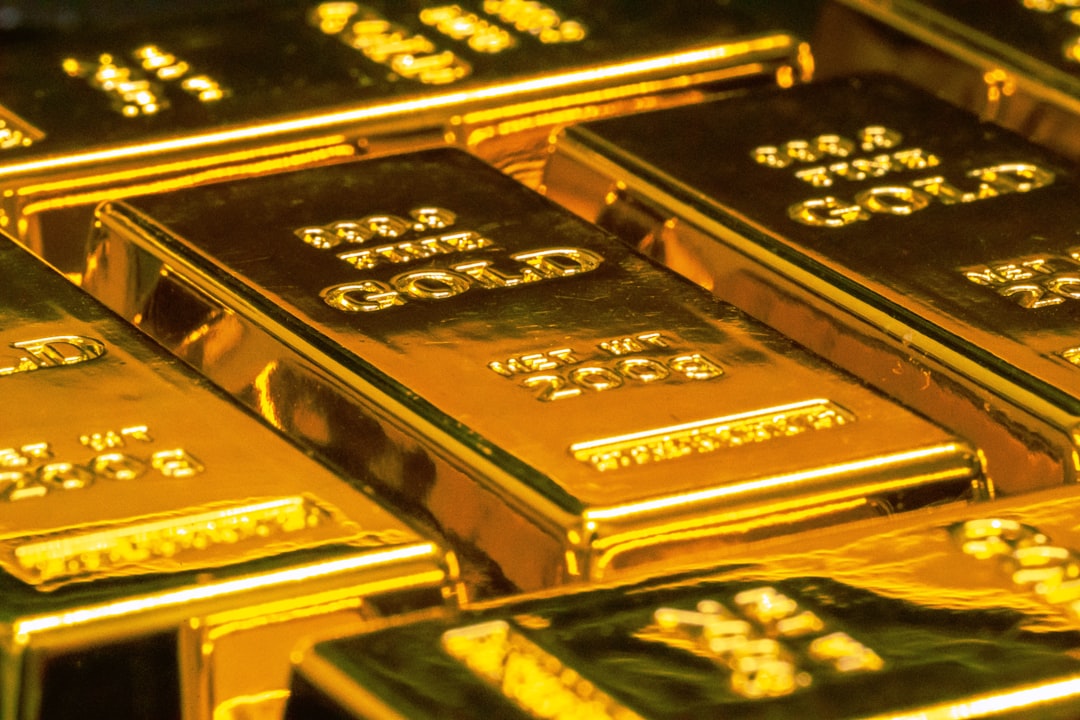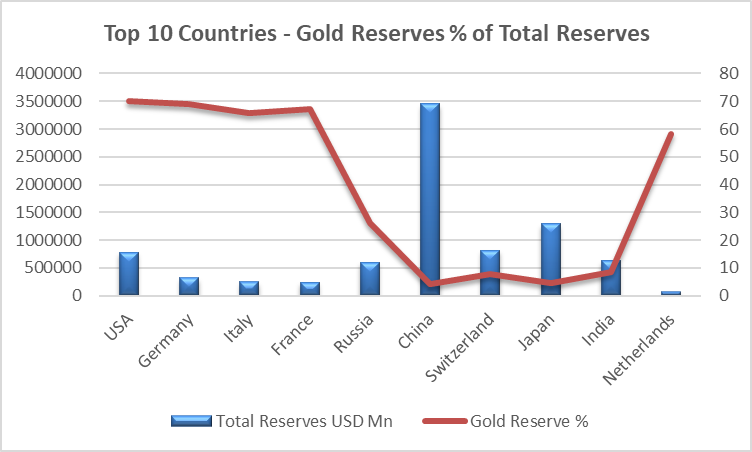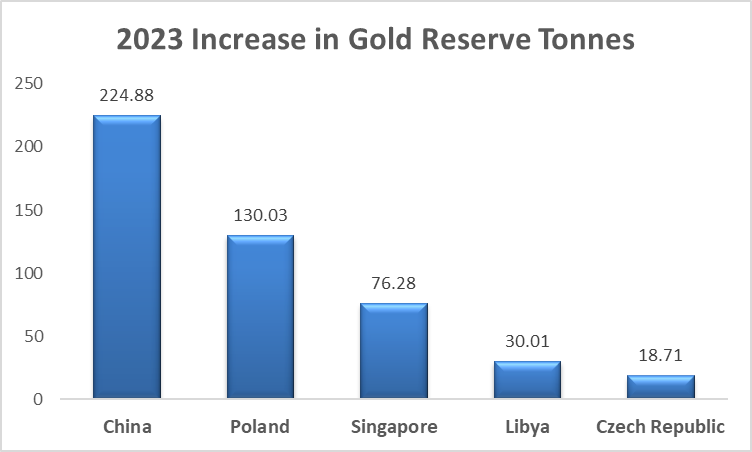
Allow Cookies ?
To enhance your browsing experience on our website, we utilize cookies. For more detailed information regarding our use of cookies, kindly refer to our privacy policy.
Allow Cookies
Posted On 2024-03-14
Author CFO Bridge
Gold has always
been a highly esteemed and stable asset due to its intrinsic value and
universal appeal. Even in today's economic landscape, central banks, including
the Reserve Bank of India (RBI), continue to accumulate and maintain
significant gold reserves. Understanding the significance of these gold
reserves for the RBI and their contribution to India's economic landscape is
crucial. This blog highlights the importance and utility of gold reserves in
the RBI's arsenal and how they ensure India's economic stability.
Central banks started adding gold reserves to their kitty during the financial crisis of 2009-09. Over the past few years, central banks have been investing in gold, which has been accelerated by decreasing trust in the dollar and the need for diversification of reserves away from the US Dollar.
This loss in trust has resulted from Global economic uncertainty created by events such as Western countries freezing $300bn of Russian foreign exchange reserves after the Ukrainian invasion. A sharp increase in interest rates has led to significant losses for worldwide bondholders, weakening the reliability of government bonds as a fundamental component of central banks' reserves.
Gold usually becomes more attractive during times of instability, and over the past two years, there has been a surge in demand for it. We predict this trend will continue this year, mainly due to geopolitical tensions and the current economic climate.
Gold - A Safe-Haven Asset:
Gold has long been considered a valuable asset that retains its worth even during economic uncertainty and market volatility. As a reliable store of value, gold serves as a crucial safeguard against currency fluctuations and geopolitical tensions. By building up gold reserves, the central banks can protect against external shocks and ensure stability amidst the ebb and flow of global financial markets.
Geopolitical risk is one of the main drivers behind the recent increase in gold demand. The ongoing conflict between Russia and Ukraine and the sanctions imposed by the US and European countries have led many central banks worldwide to accumulate gold in their reserves. This strategy offers a constructive way to protect against market volatility and promote financial stability

Source: World Gold Council Q4, 2023 Data https://www.gold.org/goldhub/data/gold-reserves-by-country
As you can see in the diagram above, according to the World Gold Council data, the top 10 countries in terms of gold reserves by tonnes were the USA, Germany, Italy, France, China, Switzerland, Japan, India, and the Netherlands.
Diversification of Reserve Portfolio:
Diversification is a non-negotiable cornerstone of responsible financial management, and as the apex financial institution, the Reserve Bank of India (RBI) staunchly adheres to this principle. The RBI maintains a well-balanced reserve portfolio that includes a diverse mix of assets, such as gold, foreign currency assets, and other securities. The Indian forex reserves consist of foreign currency assets, gold, special drawing rights, and the International Monetary Fund (IMF) reserve position. Gold, in particular, plays a critical role in diversifying the RBI's reserves as it has a proven track record of retaining its value during economic turmoil.

Source: https://www.forbesindia.com/article/explainers/indian-forex-reserves/87581/1
The RBI's comprehensive approach helps to mitigate risks and enhance the resilience of India's external sector, reducing dependence on any single asset class.
By holding a mix of assets that perform differently under different economic conditions, the RBI can significantly reduce the overall risk of its reserve portfolio.
Moreover, the RBI is
trying to improve its reserve portfolio to ensure that it has the flexibility
to respond effectively to any external shocks that may arise. This flexibility
is crucial to maintaining India's financial stability and securing the
country's long-term economic growth.
At present, the USA, Germany, Italy, France, and the Netherlands have a high percentage of gold reserves in their portfolios. China, Switzerland, Japan, and India have good Gold reserves in terms of tonnage but not as a percentage of their total reserves, but they are trying to improve that.

The profile of the
most active central banks has undergone a significant shift, with powerful
economies like the U.S., Germany, France, and Italy
opting to hold
onto their extensive gold reserves rather than make new purchases.
China, Poland, Singapore, Libya, and the Czech Republic were the top five countries that diversified their reserve portfolios by purchasing more gold.

Central banks hold reserves in gold to diversify their assets. While they are responsible for their nation's currency, the value of these currencies can fluctuate depending on the strength or weakness of the underlying economy.
India moved away from a fixed exchange rate policy to a flexible exchange rate against the US Dollar between 1991 and 2000 during economic reforms and liberalization. In the 21st century, the Indian Rupee weakened further against the US Dollar, but this period also saw robust economic growth and foreign investment.
The COVID-19 pandemic has added complexity to currency exchange rates worldwide, including the Indian Rupee. During this period, the Indian Rupee exchange rate against USD and other currencies has impacted domestic economic factors, foreign investments, and global economic developments.
In today's interconnected world, currency risks pose significant challenges for central banks. Fluctuations in exchange rates can impact a nation's trade balance, inflation levels, and overall economic stability. Gold is a natural hedge against currency risks, offering protection against depreciation and bolstering confidence in the RBI's ability to manage monetary policy effectively.
Gold is different from currency because it is a finite physical commodity whose supply can't easily be increased. As such, it is a natural hedge against inflation.
Gold is a precious
asset with an inherent quality of wealth preservation across generations. Gold
retains its purchasing power over time, unlike fiat currencies (A fiat currency
is a national currency that is not pegged to the price of a commodity such
as gold or silver), which are susceptible to volatility due to inflation and
political instability. The Reserve Bank of India's strategic decision to hold
gold reserves is a prudent step towards safeguarding the nation's wealth and
ensuring financial independence for future generations.
Since 1999, the gold price has seen a steady increase of almost 10% per year, presenting a promising opportunity for central banks.
The rise in gold
prices offers certain advantages to central banks, mainly as they can use Gold
Reserve Assets (GRAs) as a psychological cushion to reinforce their capital
rather than
for technical or accounting purposes.
The presence of substantial gold reserves enhances the RBI's credibility and instills confidence among investors and stakeholders. Gold serves as a tangible symbol of a nation's economic strength and stability, reinforcing India's standing in the global financial community. Moreover, robust gold reserves signal the RBI's commitment to prudent monetary policies and sound financial management, bolstering investor trust and attracting foreign capital inflows.
As gold carries no credit or counterparty risks, it is a source of trust in a country and all economic environments, making it one of the most crucial reserve assets worldwide, alongside government bonds.
Maintaining
stability is paramount for central banks amidst the complexities of the modern
financial system. Gold reserves play a crucial role in supporting India's
financial stability by providing a solid foundation for the RBI's monetary
operations. Whether in times of crisis or during economic expansion, gold
reserves offer reassurance and act as a bulwark against systemic risks.
Gold's inverse relationship with the US dollar, another major reserve asset, adds to its appeal. When the dollar dips in value, gold typically rises, enabling central banks to protect their reserves at times of market volatility
Summary:
Gold reserves are an invaluable tool in the RBI's arsenal to ensure India's economic stability. They serve multiple purposes, such as hedging against currency risks, diversifying the reserve portfolio, and preserving wealth. By maintaining substantial gold reserves, the RBI reinforces India's economic stability, enhances credibility, and strengthens financial resilience. In uncertain economic times, gold remains a steadfast ally, helping the RBI safeguard India's prosperity and secure a brighter future for generations to come. Gold plays a crucial role in India's economic landscape, and its importance cannot be overstated.
CEO Description
Here's a curated list of finance leaders for your industry and company size.
Finding your perfect CFO partners...
Let's talk! Book your free consultation today
